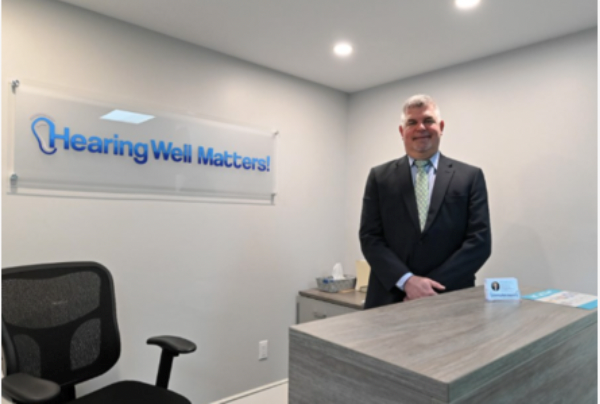Do You Know Your “Hearing Number”?
Hearing care professionals rely on many tests and evaluations to determine a patient’s hearing health needs. But all of the resulting data can sometimes seem foreign and incomprehensible to people outside of the field.
The “Know Your Hearing Number” campaign is a recent initiative by the Johns Hopkins Bloomberg School of Public Health that introduces a common way for people to talk about
hearing. Hearing connects us to the people and world around us, but the average person doesn’t have the language or context we need to understand and talk about it. That’s where the Hearing Number comes in, which is simply the four-frequency pure tone average (PTA4).
The Hearing Number introduces an approachable, widely understood metric for hearing, destigmatizes hearing loss, and improves fluency in hearing loss as a public health issue. When
people know and track their Hearing Number throughout their life, it moves people toward thinking about their hearing as a dimension of their overall health, and away from thinking it only in the context of loss or ageing.
The Hearing Number/PTA4 itself isn’t a new concept—it’s the basis of how the World Health Organization, ASHA, and other organizations classify hearing. While there are many ways to measure hearing, the Hearing Number is an easy concept for the average person to grasp: it represents the softest speech sound someone can hear. The higher someone’s Hearing Number, the louder sounds need to be for that person to hear them.
The goal of the campaign is to empower people to know their Hearing Number and how it changes over time, so that they protect their hearing and embrace strategies and technologies to optimize their hearing throughout their lives.
Why is the Hearing Number concept useful?
A routine challenge for hearing healthcare professionals in talking with patients about their hearing is that there are many ways to measure hearing, but the average person has very little
context for understanding this important sense in the first place:
What does “normal” hearing mean? What are Hertz or Decibels? Even the basic categories that are used are vague and slightly problematic; someone’s hearing loss might be considered “mild” or “moderate” by
medical standards, but if it’s having a big impact on someone’s life, it’s not mild or moderate to them!
Why is the PTA4 useful?
Because it is universal, accessible, and actionable.
There are many hearing measures that provide nuanced information about how people hear speech. But other measures depend on language, and any hearing measure that depends on
language is not universal. The PTA4 is used by hearing specialists all over the world, so no matter where your hearing is tested, your PTA4 is the same.
The PTA4 is easily accessible by having a hearing test at a hearing clinic. And, the PTA4 is actionable: if you know your Hearing Number you can find communications strategies and technologies that help you optimize your hearing.
How do Audiologists utilize the Hearing Number when talking with patients?
Introducing a Hearing Number and encouraging people to monitor their hearing across their lifetime aligns with broader macroscopic trends of empowering consumers with their own health metrics to understand and optimize their health. Patients get overwhelmed by all the data around hearing test results. A universal metric for hearing that can be accessed easily can help patients understand their hearing and give them the vocabulary to talk about it.
The Hearing Number doesn’t replace the ways that hearing is measured; it offers a very understandable anchor point for describing hearing, much in the way that visual acuity, blood
glucose, total cholesterol, and blood pressure are commonly used health metrics that are familiar to both clinicians and the lay public.
Patients are encouraged to visit a hearing clinic to have their hearing assessed, so that they can know and then use their Hearing Number. At the Burlington ‘Hearing Well Matters’ clinic, hearing tests are no-cost and no-obligation. Why not book an appointment by calling 905-681-HEAR (4327) today?

